Btu Buddy has met Bob at a restaurant for lunch to answer some questions that Bob had about yesterday’s service call.
Bob asked, “Why did that motor have two contactors and so many wires going to it? It seemed very confusing. I am glad that I tagged those motor leads when I disconnected the motor. I never would have figured out how to reconnect the leads.”
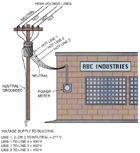
Figure 1. This is an illustration of a 460V power service entrance to a small factory. This is a common service for many commercial buildings. (From Refrigeration & Air Conditioning Technology, 6th Edition, by William Whitman, William Johnson, John Tomczyk, and Eugene Silberstein, published by Delmar Cengage Learning.) (©Delmar Cengage Learning.)
Bob asked, “Why furnish both voltages? I don’t think that I have ever seen 460V on a job.”
Btu Buddy responded, “Many jobs use 460V. There is even a 575V system that is used in some applications. More typically, the 460V application is used for large commercial jobs (Figure 1). The wire size required to serve a large system would only use half the current with a 460V system as opposed to a 230V system. There is considerable savings in the materials for the wire, the conduit, junction boxes, and breakers for a 460V system. The installation time is also much quicker for the high voltage because of the smaller conduit, junction boxes, and breaker boxes.
“With the 460V system, 277V to the neutral can be achieved. This is often used for the lighting. This calls for smaller wire size, and 277V light fixtures cannot be used at home, so stealing them for home use is reduced.
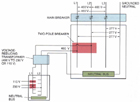
Figure 2. This is an illustration of the power panel for 460V. Notice that it has a step down transformer for 230V and 115V used for small loads in the building, such as fans, computers, and coffee makers. (From Refrigeration & Air Conditioning Technology, 6th Edition, by William Whitman, William Johnson, John Tomczyk, and Eugene Silberstein, published by Delmar Cengage Learning.) (©Delmar Cengage Learning.)
Bob said, “Boy, that is a lot to remember.”
Btu Buddy said, “All you have to do is apply some common sense thinking:
1.Large loads, high voltage, 460V
2.Medium loads, medium voltage, 230V
3.Lighting loads, 277V
4.Appliance loads, 115V
5.Control voltage may be a low voltage, 24V.”
Bob said, “That sounds easy and you can say it faster than I can think.”
Btu Buddy said, “That is experience, and you are getting the hang of it. But back to the 230V system we worked on yesterday.
“The compressor motor is a dual voltage motor that can be used with 230V or 460V. When you called in and ordered a 230V motor, the remanufacturing company may have converted the motor from 460V to 230V before they shipped it.”
Bob asked, “How could they do that?”
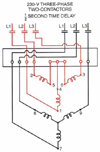
Figure 3. This is an illustration of a nine-lead motor that will operate off of 230V or 460V with a change of wiring in the motor terminal box. In this illustration, it is wired for 230V and uses two contactors with time delay between them. (From Refrigeration & Air Conditioning Technology, 5th Edition, by William Whitman, William Johnson, and John Tomczyk, published by Delmar Cengage Learning.) (©Delmar Cengage Learning.)
1.From L1 to terminal 1 at the motor, then through the motor to terminal 4;
2.From L2 to terminal 2 at the motor, then through the motor to terminal 5;
3.From L3 to terminal 3 at the motor, then through the motor to terminal 6. Remember that 4, 5, and 6 are banded together.
“Now look at the second contactor in place:
1.From L1 to terminal 7 at the motor, then through the motor to the center tap;
2.From L2 to terminal 8 at the motor, then through the motor to the center tap;
3.From L3 to terminal 9 at the motor, then through the motor to the center tap.
“One motor is in red and the other motor is in black. When you connect 4, 5, and 6 together in the red motor you are essentially creating a center tap just like the one in the black motor, except you now have the capabilities to disconnect the center tap, for other purposes.”
Bob then said, “This looks like two individual motors with two contactors.”
Btu Buddy said, “That is exactly what it is. They are wound into the same stator, with one rotor.
“Now let’s talk about why and how to start the motor. We have already explained that the motor can be used for dual voltage. But there is another very good reason for using this motor configuration; locked rotor starting amps can be reduced in this compressor. It takes less starting amps to start the smaller motor. Suppose these were two 40 hp motors, combined to make an 80 hp compressor. We can start the first 40 hp motor and about one second later start the second 40 hp motor with considerably less inrush current. There was a time delay timer that allowed this to happen with the compressor yesterday. It all happened so fast that you didn’t even notice it.”
Bob said, “You are right. I didn’t notice it.”
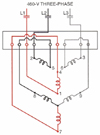
Figure 4. This is an illustration of the same motor as in Figure 3 that is wired for 460V across the line start. (From Refrigeration & Air Conditioning Technology, 5th Edition, by William Whitman, William Johnson, and John Tomczyk, published by Delmar Cengage Learning.) (©Delmar Cengage Learning.)
Bob said, “Wow.”
Btu Buddy said, “Let’s sum it up:
1.There are two 40 hp motors that operate on 230V. When wired in parallel, 230V can be used to start and run them with a time delay between starts.
2.When wired in series, they can be operated with a 460V power supply and one contactor, starting across the line.”
Bob said, “I don’t know if I can ever learn everything about this business.”
Btu Buddy then said, “I bet you can’t remember the first service call that we made together. That was 100 service calls ago. I remember telling you back then that the difference between a professional and an amateur is the professional cares about the job being done. You take these jobs home in your mind and keep thinking about them when many technicians turn them off when they get out of their truck at night. You will go far. This profession never gets boring to an interested technician and they are always eager to know more. I would say that describes you. You can’t learn it all at one time. This profession is like eating a 24-ounce steak; you better take it a bite at a time and chew it slowly or it will make you sick.”
Bob said, “That is a good way to put it. We take ‘baby steps’ and learn a little every day.”
Btu Buddy then said, “I have a surprise for you. I noticed that your company has just hired a new technician, Tim. A graduate right out of school, just like you were several years ago. I understand that he is going to travel with you. You are going to be his Btu Buddy; you have graduated.”
Bob said, “That would be a real honor. I have noticed that you really learn a subject when you have to explain it to others. In fact, I don’t believe that you really understand a subject unless you can explain it to someone else.”
Btu Buddy said, “Many technicians misunderstand recognition for understanding. For example, they recognize an expansion valve, but they may not understand what is happening inside the valve. Understanding what is happening inside the valve is the key to being able to troubleshoot the valve. When you really understand it, you can explain it to others.”
Bob said, “Thank you very much for all your help.”
Publication date:07/18/2011
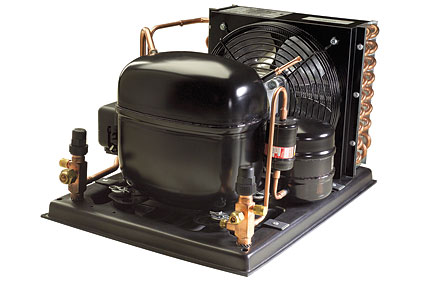


Report Abusive Comment